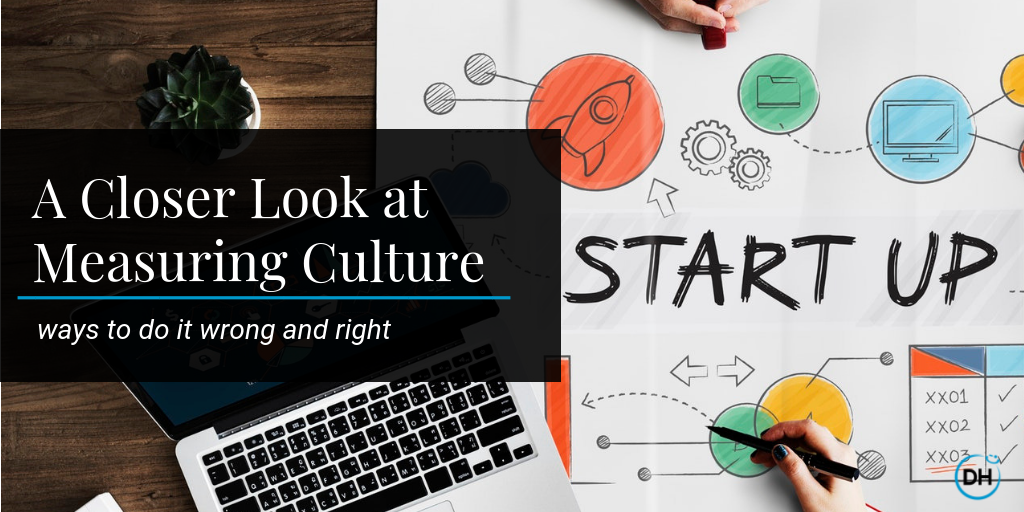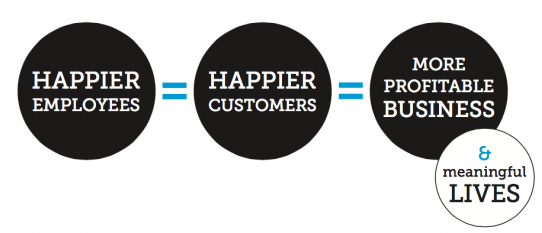
Over the last few years, “company culture” has become buzz lingo when mostly talking about scandals, pervasive harassment, and toxic leadership. To the outsider, it might be easy to think that some larger-than-life companies are just going about their business and ignoring the potential pitfalls of their culture [though in some cases this is true].
Well for most that we’ve met, they’re already taking a look at their culture through the lens of operations and employee engagement. Across all of them, however, there’s an underlying concern about whether or not all their surveys and data are providing useful insights or if they measure the right things.
For many, they just can’t put a finger on what’s going wrong with their culture and how to fix it.
From our experience, culture has to align with business strategy [and vice versa]. It seems like a simple concept, but we’ve seen it go completely haywire without the guidance of core values and an organizational purpose.
Here’s a real-world example of measurements gone wrong:
A little more than two years ago, the scandal broke as federal regulators revealed that Wells Fargo employees created millions of fake bank and credit card accounts using customer information [without their customers’ authorization].
 Why did this happen? Because Wells Fargo had implemented unrealistic sales goals, which incentivized their employees [including management] to encourage the creation of these fake accounts.
Why did this happen? Because Wells Fargo had implemented unrealistic sales goals, which incentivized their employees [including management] to encourage the creation of these fake accounts.
If core values were at the center of their culture, then these unrealistic sales goals probably wouldn’t have been set, and employees wouldn’t have felt pressured to bend the rules to achieve them.
In this case, the culture grew toxic to adapt and align with strategy [wild sales projections, top-down pressure].
This scandal has cost the company $185 million in fines, and millions more in business and reputation loss.
While still recovering from the scandal, in 2017, their CEO Tim Sloan shared The Vision, Values & Goals of Wells Fargo; in which the values of ethics and doing “what’s right for customers” are both listed.
When implementing change or a big push for growth, is it worth it to forego a closer look at your company culture? We don’t think so.
Related: Are You Living By Company Values or Just Sticking Them on a Wall?
And when measurements go right...
One of our clients, Northwell Health, wanted to align its culture for a better employee and patient/customer experience. To measure its culture, we helped Northwell Health assess their current culture through site visits, interviews, and surveys.
.png?width=300&name=If%20money%20doesn%E2%80%99t%20buy%20you%20true%20happiness,%20then%20you%E2%80%99re%20not%20spending%20it%20the%20right%20way.%20(4).png) When reviewing the data, we helped to co-create frameworks that supported the behaviors aligned with their values [connectedness, awareness, respect, and empathy] and picked out both KPIs and soft indicators to watch out for.
When reviewing the data, we helped to co-create frameworks that supported the behaviors aligned with their values [connectedness, awareness, respect, and empathy] and picked out both KPIs and soft indicators to watch out for.
Over a two-year period, the healthcare system’s patient experience scores jumped into the 90th percentile for some locations and saw significant improvement in the HCAHPS survey, which is used to assess patient satisfaction for all U.S hospitals.
Related: Northwell Health Case Study: A Culture Transformation in Healthcare
When we think about culture transformation, there are soft and hard data indicators to measure success by. After all, culture isn’t supposed to be either too fluffy nor too formal. As part of our model, culture can create both sustainable, profitable business AND meaningful lives.

What does that really mean? Your company culture can create moments that matter for the customer and the employee.
Our client RealTruck wanted to create a soft indicator that helped demonstrate how their culture affected the customer experience in a personal way, so they chose to count how many thank-you notes and cards they received from customers. As expected, their number of cards received rose as they strengthened their culture and the employees get consistent affirmation about the quality service they’re providing.
Are you curious how a happier culture can transform your business? See what we can do for you:

Bri is the Impact Storyteller on the Delivering Happiness team. Working previously as a freelancer, her goal has always been to work with passionate people who are focused on helping individuals and businesses find their purpose. As part of DH, she now gets to accomplish that every day. Bri resides in Arizona and is lucky enough to enjoy the sun all year round.